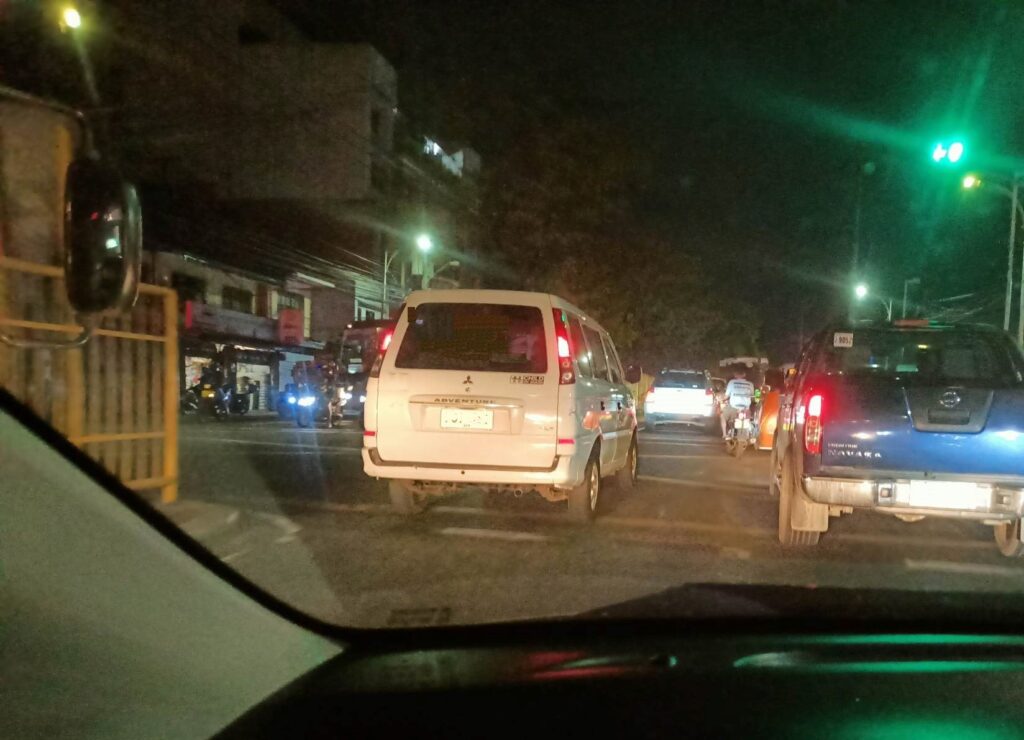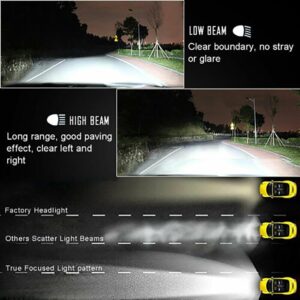From late 2021 up to the middle of this year, local news outlets, websites, automotive-related forums and chat groups were in a writing frenzy about the campaign of the Land Transportation Office (LTO) and the Philippine National Police – Highway Patrol Group (PNP-HPG) against super bright LED headlights and auxiliary lights on motor vehicles and motorcycles. In the end, the authorities relented with the PNP-HPG chief ordering the return of the confiscated lights after several media outlets reported the authorities’ supposed “misinterpretation of the law”. One online media outlet even concluded that “there is no Philippine law or regulation specifically prohibiting the use of LED lights or LED technology for cars”.
After the confiscation brouhaha has subsided, there was a noted increase in the purchase of high-intensity LED headlight bulbs and their installation in the headlamps and driving lights of cars and motorcycles. Most notable installations of super bright LED headlights were on vehicles with super dark window tint all around, including the windshields, which the LTO is planning to regulate soon. Most of the owners reasoned that the high intensity and luminosity LED lights allow them to see better through their dark tinted windshields when driving at night. Little do these self-serving irresponsible motorists know about the dangers that their super bright LED headlights and driving lights are exposing other road users to.
Health Hazard
It has been generally observed that majority of bright LED headlights dazzle the drivers of vehicles going the opposite direction, even when these are switched to “low beam”. A study conducted by the Royal Automobile Club (RAC) of England stated that 65 per cent of motorists have been dazzled by LED headlights that were factory-installed in new vehicles. In the United States, the National Highway Traffic Safety Administration (NHTSA) reported that thousands of consumers have submitted complaints against LED headlight glare. What more here in the good ol’ Philippines where the intensity and luminosity of ultra-bright LED headlights are not regulated at all?
Glare from bright LED headlights are not only distracting and have the propensity to cause road accidents, these may also damage the retina of our eyes as well as disturb our natural sleep rhythms. ANSES, the French agency for food, environment and occupational health and safety, revealed that “exposure to an intense and powerful LED light is ‘photo-toxic’ that can accelerate the ageing of the retinal tissue, which can lead to irreversible loss of retinal cells, macular degeneration and diminished sharpness of vision.” ANSES recommended that car companies should limit the luminous intensity of vehicle LED headlights but we doubt if this recommendation is being followed by those in the Philippine aftermarket and car accessories industry.
Blinded by the Light
Compared to the incandescent light bulbs of comparable brightness, LEDs or Light Emitting Diodes have become popular in lighting fixtures in recent years because it uses only a fifth of the electricity needed, thus, saving energy and helping preserve the environment. Car companies, in particular, use LED bulbs not only to improve vehicle illumination and night driving safety, but to lessen the electrical load on the alternator as well, which helps make the engine less burdened and more fuel-efficient. Unfortunately, the easy and immediate availability of aftermarket conversions of headlight and fog/driving light bulbs from halogen to ultra-bright LED, and the apparent lack of government regulations, has created a “blinding effect” on everyone, both literally and figuratively.
Retailers and installers of bright aftermarket LED headlights and fog/driving lights are blinded by the profits they tend to make on the sales of these, to the point that many – if not most – of them disregard the warning labels that these bright LED bulbs are for “power sports or fog use only”, meaning that these are intended to be used on the race tracks and off-road driving conditions and NOT on public roads and highways. Vehicle owners, meanwhile, are blinded by their pride and self-indulgence to have the brightest headlights fueled by their lame and selfish excuse that it helps them safely drive their heavily-tinted vehicle at night. The rest of the road users are just either simply blinded by these damn bright powerful lights or blinded by rage because of the annoying glare!
Science, Engineering and Law
Headlights made for left-hand drive (LHD) countries like the U.S., France and the Philippines are different from those for right-hand drive (RHD) markets like the U.K., Japan, and Thailand. The science behind the engineering of these headlights – whether halogen or LED, single or multi-reflector – controls the light and its direction so it won’t go above the horizontal level of the headlamps and blind oncoming traffic. Halogen headlight bulbs are made with a small cap at its tip while factory-installed LED bulbs have reflectors designed to direct its bright light. In the U.S., headlights are governed by Federal Motor Vehicle Safety Standards (FMVSS) 108 that regulates all lighting, signaling and reflective devices, including original and replacement / aftermarket headlamps, fog / driving lights and reflectors.
Unfortunately, our laws, specifically Section 36 (c) of Republic Act 4136, is not as strict about headlight regulations. It only states that “every motor vehicle of more than one meter of projected width, while in use on any public highway shall bear two headlights, one on each side, with white or yellowish light visible from the front, which, not later than one-half hour after sunset and until at least one-half four before sunrise and whenever weather conditions so require, shall both be lighted.” Revisions to this section, including luminosity and light intensity, were planned to become applicable when the Motor Vehicle Inspection System (MVIS) becomes mandatory, but since the public is opposed to the MVIS, these revisions are still in limbo.
Ignorance or Incompetence?
Without mandated standards and government regulations, high-intensity “off-road only” replacement LED headlamp bulbs are freely being imported and sold by automotive and motorcycle accessories shops. Even more alarming is that these retina-burning lights are being installed by improperly-trained technicians who almost always NEVER check the aiming and alignment of the headlight beams, especially since most of these shops do not have the equipment to do so. Then, there are those irresponsible, uncaring and sadistic vehicle owners who intentionally just want to “light up the night” with his vehicle’s ultra-bright headlights, driving lights and auxiliary lights while blinding other motorists and road users in the process.
Owners of older vehicles who install high-intensity headlights are blissfully unaware that the sun’s ultraviolet light in our tropical setting can cause the aged plastic headlight covers and reflectors to haze over, which makes the light beam less precise and cause glare. Thus, if you plan to install LED headlight bulbs in a 10-year-old vehicle that you park in an open space, please have your headlamps checked or replaced before you do so. Otherwise, you’d be driving around with a blinding glare from your headlights and you’d be driving everyone else on the road blinded with rage!
The Law Has The Final Say
Fortunately, RA4136 Section 36 (c) also mandates that “all motor vehicles shall be equipped with devices for varying the intensity of light, and the driver must dim the headlights or tilt the beams downward whenever the vehicle is being operated on well-lighted streets within the limits of cities, municipalities, and thickly populated barrios or districts, or whenever such vehicle meets another vehicle on any public highway.” Interpreted in another way, it states that drivers who install ultra-bright LED headlights must install a device to vary its intensity and those who don’t dim their powerful headlights while driving on public roads are already considered in violation of this law.
Furthermore, LTO Memorandum Circular No. 2020-2240, dated December 29, 2020, entitled “Private Motor Vehicle Standards and Implementing Rules and Regulations” states that “auxiliary lights shall be directed downwards” and that “fog lamps may be lighted only during instances of thick fog, falling snow, heavy rain or similar conditions”. Therefore, by law, drivers of vehicles should aim their very bright auxiliary lights downwards and NOT straight towards the horizon unto oncoming traffic. However, the LTO circular should be amended to specify the justifiable lighting and operation of bumper-mounted driving lamps, especially those equipped with powerful high-intensity LED lights.
In the end, our laws on driving also demands courtesy towards other motorists and road users. Blinding everyone else while you’re driving at night through a heavily tinted windshield is definitely NOT a show of courtesy. It’s not only selfish, potentially dangerous, and a health hazard, it’s also abjectly moronic. So please… dim them damn lights, dummy!
 Power Wheels Magazine A Notch Above
Power Wheels Magazine A Notch Above















